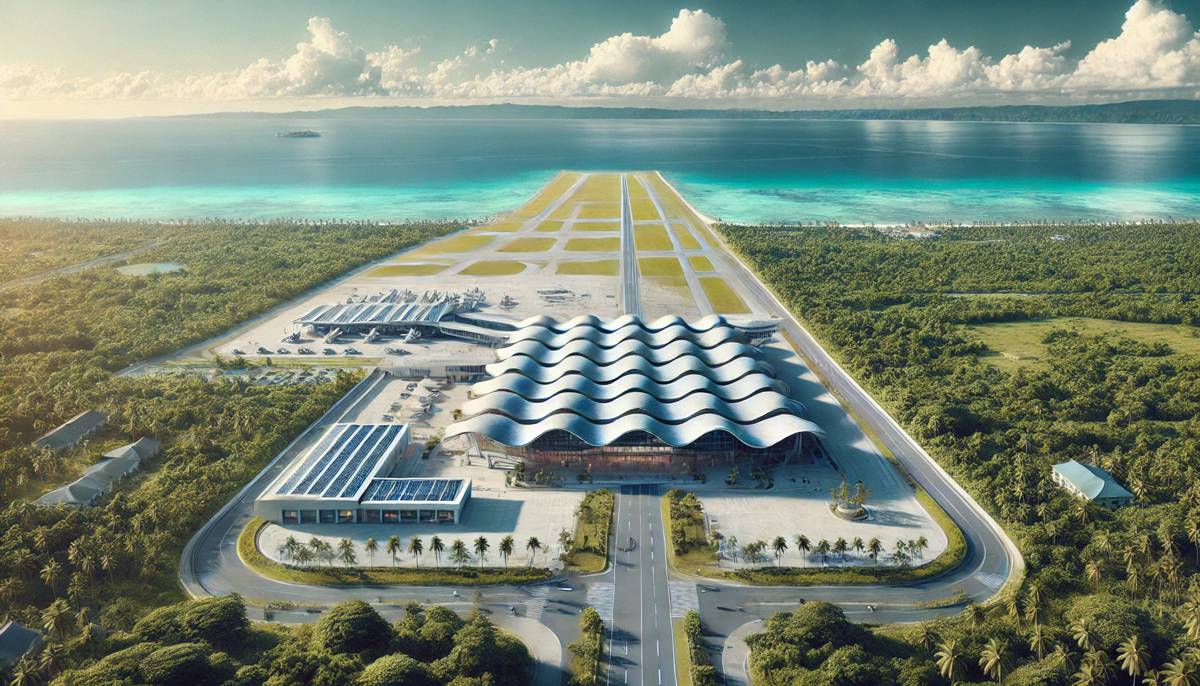Transforming Bohol-Panglao International Airport in the Philippines
The Philippines is taking a monumental step toward modernizing its aviation infrastructure, with the Bohol-Panglao International Airport set to undergo significant upgrades.
A Request for Proposals (RFP) to expand, operate, and maintain this pivotal gateway has been issued. This project, valued at approximately PHP 4.53 billion (US$78 million), marks a new chapter in the nation’s ambitious infrastructure development agenda, highlighting the importance of regional connectivity and sustainable growth.
A Strategic Vision for Bohol-Panglao International Airport
The Bohol-Panglao International Airport, often referred to as the “Green Gateway” of the Philippines, is poised to see transformative changes under this new initiative. Located on Panglao Island in the province of Bohol, this airport has been a crucial hub for domestic and international travellers since its inauguration in November 2018. Now, with the new RFP issued, the airport is set for a significant upgrade that will bolster its capacity and operational efficiency.
The project, part of the National Government’s Infrastructure Flagship Projects, aims to enhance regional connectivity, attract more airlines and international flights, and expand the airport’s capacity to accommodate a growing number of passengers. Additionally, it seeks to promote sustainable and efficient operations, a goal aligned with the airport’s existing reputation as the first eco-airport in the Philippines. The initiative will also focus on developing commercial services within the terminal and its surrounding areas, further boosting the local economy.
Aboitiz InfraCapital and the Competitive Landscape
Aboitiz InfraCapital has already submitted an unsolicited proposal for the project, signalling its interest in leading the airport’s transformation. However, the competitive landscape is open, with the National Economic and Development Authority (NEDA) Board, along with the Department of Transportation, set to negotiate all financing proposals. This open call for proposals invites challengers to submit their Qualification Documents, Technical Proposals, and Financial Proposals as a single bid package by the deadline of November 11, 2024.
The involvement of multiple stakeholders ensures that the project will be awarded to a consortium that not only offers financial viability but also demonstrates a clear vision for the airport’s future. This competitive process is crucial for ensuring that the best possible outcomes are achieved, both in terms of infrastructure quality and the overall passenger experience.
A Brief History of Bohol-Panglao International Airport
The Bohol-Panglao International Airport has an intriguing history, marked by decades of planning and strategic shifts. Originally conceived as a replacement for the Tagbilaran Airport, the project gained traction in the early 2000s, with the first feasibility study conducted in 2000 during the Estrada administration. However, it wasn’t until September 4, 2012, that the project received the green light from then-President Benigno Aquino III.
Initially, the airport was to be funded through Official Development Assistance (ODA), rather than the PPP model. The Japan International Cooperation Agency (JICA) played a significant role in the airport’s development, signing an agreement with the Philippine government in 2013 to build the airport at a cost of 10.78 billion yen. The project was later named the New Bohol Airport Construction and Sustainable Environment Protection Project, highlighting its dual focus on infrastructure and environmental sustainability.
Construction began in June 2015, following the selection of Japanese Airport Consultants (JAC) for design and consultancy work, and a consortium of Chiyoda Corporation and Mitsubishi Corporation as the prime contractor. Despite several delays, the airport was finally inaugurated on November 28, 2018, with a grand ceremony led by then-President Rodrigo Duterte.
Current Infrastructure and Future Prospects
The Bohol-Panglao International Airport currently features a 2,500-meter asphalt runway, taxiways, and a two-level passenger terminal building designed to accommodate two million passengers annually. The airport’s infrastructure, which includes three jet bridges and a wave roof design inspired by the famous Chocolate Hills, reflects a blend of modern engineering and cultural sensitivity.
One of the airport’s most notable features is its commitment to sustainability. The terminal uses natural ventilation and solar power, with one-third of its energy needs met by solar panels. This focus on green technology aligns with the broader global trend toward more sustainable infrastructure, positioning the Bohol-Panglao International Airport as a model for future airport projects in the region.
Looking ahead, the planned upgrades under the new RFP will likely include an extension of the runway to 2,800 meters, making it capable of accommodating larger aircraft and supporting night operations with advanced navigational equipment. The expansion will not only increase the airport’s capacity but also its appeal to international airlines, potentially transforming it into a key hub for Southeast Asian air travel.
Challenges and Opportunities
The transformation of Bohol-Panglao International Airport presents both challenges and opportunities. On the one hand, the project requires significant investment and coordination among various stakeholders, including government agencies, private companies, and local communities. On the other hand, the potential benefits are substantial, particularly in terms of boosting tourism, creating jobs, and enhancing the region’s overall economic prospects.
One of the key challenges will be ensuring that the expansion and modernization efforts do not compromise the airport’s environmental credentials. Maintaining its status as the Philippines’ first eco-airport will require careful planning and the integration of advanced technologies that reduce the airport’s carbon footprint.
At the same time, the project offers a unique opportunity to showcase the Philippines’ commitment to sustainable development. By leveraging the latest in green technology and infrastructure design, the Bohol-Panglao International Airport can serve as a blueprint for future airport projects not only in the Philippines but across the Asia-Pacific region.
The Road Ahead
As the deadline for bid submissions approaches, all eyes will be on the PPP Center, NEDA, and the Department of Transportation as they evaluate the proposals. The chosen consortium will have the responsibility of transforming Bohol-Panglao International Airport into a world-class facility that meets the needs of both passengers and the environment.
This project, while ambitious, is a clear indication of the Philippines’ forward-thinking approach to infrastructure development. By prioritizing sustainability, connectivity, and efficiency, the Bohol-Panglao International Airport will not only enhance the travel experience for millions of passengers but also contribute to the broader goal of regional economic development.
The transformation of this airport is more than just a construction project; it’s a testament to what can be achieved when public and private sectors work together toward a common goal. The future looks bright for Bohol-Panglao International Airport, and with it, the entire region is set to benefit from improved connectivity, increased tourism, and a more robust economy.




















